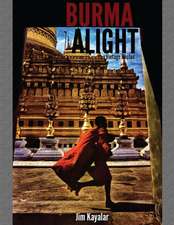Photography, Anthropology and History: Expanding the Frame
Autor Elizabeth Edwards Editat de Christopher Mortonen Limba Engleză Paperback – 11 noi 2016
| Toate formatele și edițiile | Preț | Express |
|---|---|---|
| Paperback (1) | 489.26 lei 6-8 săpt. | |
| Taylor & Francis – 11 noi 2016 | 489.26 lei 6-8 săpt. | |
| Hardback (1) | 769.37 lei 6-8 săpt. | |
| Taylor & Francis – 28 dec 2009 | 769.37 lei 6-8 săpt. |
Preț: 489.26 lei
Nou
Puncte Express: 734
Preț estimativ în valută:
93.63€ • 97.39$ • 77.30£
93.63€ • 97.39$ • 77.30£
Carte tipărită la comandă
Livrare economică 14-28 aprilie
Preluare comenzi: 021 569.72.76
Specificații
ISBN-13: 9781138255968
ISBN-10: 1138255963
Pagini: 312
Ilustrații: Illustrations, black and white
Dimensiuni: 156 x 234 x 22 mm
Greutate: 0.45 kg
Ediția:1
Editura: Taylor & Francis
Colecția Routledge
Locul publicării:Oxford, United Kingdom
ISBN-10: 1138255963
Pagini: 312
Ilustrații: Illustrations, black and white
Dimensiuni: 156 x 234 x 22 mm
Greutate: 0.45 kg
Ediția:1
Editura: Taylor & Francis
Colecția Routledge
Locul publicării:Oxford, United Kingdom
Notă biografică
Christopher Morton is Head of Photograph and Manuscript Collections, Pitt Rivers Museum, University of Oxford and an Adjunct Fellow of Linacre College, Oxford Elizabeth Edwards is Professor and Senior Research Fellow in Cultural History of Photography, University of the Arts London (LCC), UK
Cuprins
List of Figures, Notes on Contributors, Acknowledgements, Introduction, Part I: Historicizing Visual Anthropology, Part II: Institutional Structures, Part III: Fieldwork, Part IV: Indigenous Histories, Selected Reading, Index
Recenzii
'This volume is likely to serve as a stimulus to the new phase of research that is getting underway - an essential text in any course, undergraduate or postgraduate, that references anthropology and photography.' Nicolas Peterson, The Australian National University, Australia
Descriere
As current research rethinks the relationship between photography and anthropology, this volume will serve as a stimulus to this new phase of research as an essential text and methodological reference point in any course that addresses the relationship between anthropology and visuality.


















